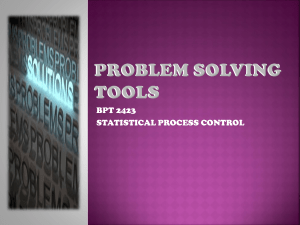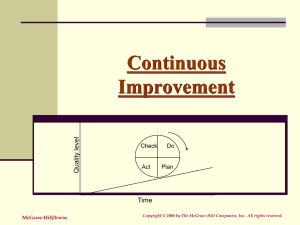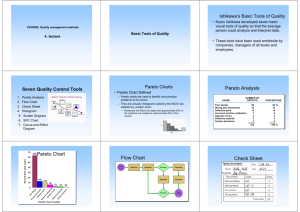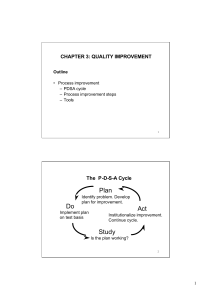7 Quality Tools
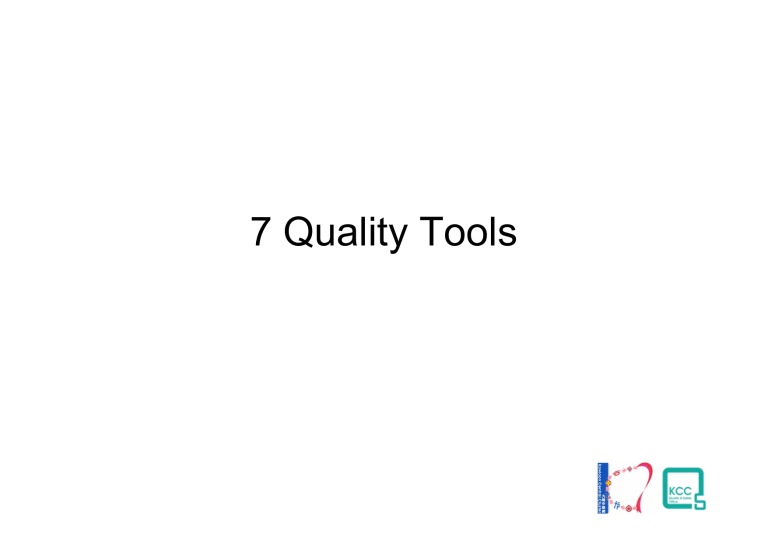
7 Quality Tools
Flow Charts
The 7 Quality
Tools for
Process
Improvements
Cause-Effect Diagrams
Pareto Chart
Where did the Basic Seven come from?
Kaoru Ishikawa
•
Known for
“
Democratizing Statistics
”
•
The Basic Seven Tools made statistical analysis less complicated for the average person
•
Good Visual Aids make statistical and quality control more comprehendible.
What Is a Flowchart?
A diagram that uses graphic symbols to depict the nature and flow of the steps in a process.
Benefits of Using Flowcharts
• Promote process understanding
• Provide tool for training
• Identify problem areas and improvement opportunities
" Draw a flowchart for whatever you do. Until you do, you do not know what you are doing, you just have a job.”
-- Dr. W. Edwards Deming.
Keys to Success
• Start with the big picture
• Observe the current process
• Record process steps
• Arrange the sequence of steps
• Draw the Flowchart
What Is a Cause and Effect
Diagram?
A graphic tool that helps identify, sort, and display possible causes of a problem or quality characteristic.
Benefits of Using a Cause-and-Effect Diagram
• Helps determine root causes
• Encourages group participation
• Uses an orderly, easy-to-read format
• Indicates possible causes of variation
• Increases process knowledge
• Identifies areas for collecting data
Data Collection
• Where
• What
• Who
• How
√ √ √ √ √ √ √
√ √ √ √ √
√ √ √ √
√ √
√
√
√ √ √
√ √ √
• Vilfredo Pareto (1848-1923) Italian economist
– 20% of the population has 80% of the wealth
• adapted by Joseph Juran.
• Remember the 80/20 rule states that approximately 80% of the problems are created by approximately 20% of the causes.
Pareto Charts
Slices
0
1
2
3
4
5
6
7
Acme Pizza
Frequency
1
33
65
8
12
0
0
1
%
0.3
13.09
25.79
3.17
4.76
0
0
0.3
Acme Pizza
•
The completed Pareto Analysis results in the following: im ed
40
30
20
10
0
70
60
50
2 2 1 4 4 3 7 5 5 6 7
Slices of Pizza
Scatter Diagrams
Slide 1 of 4
• Scatter Diagrams Defined
– Scatter Diagrams are used to study and identify the possible relationship between the changes observed in two different sets of variables.
Constructing a Scatter Diagram
– 1. collect two pieces of data and create a summary table of the data.
– 2. Draw a diagram labeling the horizontal and vertical axes.
• 3. It is common that the “cause” variable be labeled on the X axis and the “effect” variable be labeled on the Y axis.
– 4. Plot the data pairs on the diagram.
– 5. Interpret the scatter diagram for direction and strength.
.





